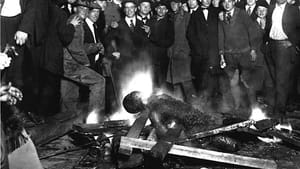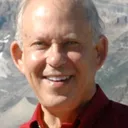Stay in the Loop
BSR publishes on a weekly schedule, with an email newsletter every Wednesday and Thursday morning. There’s no paywall, and subscribing is always free.
The essential American dilemma
When power becomes violence

President Obama was correct in recently telling a group of young civil rights activists that racism is something “deeply rooted in our society…in our history.” (Click here.) But what are the roots of racism itself? Obama didn’t try to answer this more difficult question.
The answer is deceptively simple. Racism and violence result from the age-old tendency of one person or group to use aggression to dominate and exploit another. Social control then escalates to misguided abuse of power, often exacerbated by imagined threats to identity and the sense of self evoked by the out-group and the marginalized. Ta-Nehisi Coates, in The Atlantic, Novermber 26, alluded to this proposition when he pointed out that “Barack Obama is the president of a congenitally racist country, erected upon the plunder of life, liberty, labor, and land. This plunder has not been exclusive to black people.” (Italics ours.) Like many other societies past and present, and despite its emphasis on freedom and democracy, American society has, for good or ill, grown and developed through the use of aggression as a means for enhancing self-interest and power.
The divergent foundations of “the American way”
Our country was built on two divergent foundations, both set down as a social contract in the Constitution. The first of these — based in the Judeo-Christian tradition — is that human rights and welfare are the birthrights and responsibility of every human being toward one another. The second — based in territoriality and commerce — is that any person or group has an “inalienable right” to acquire wealth and power in competition with others, which often involves defeating them or subjugating them to one’s will. These two value systems coexist in an uneasy dialectic with each other. Our country was born under “the rockets’ red glare” and at the same time placed inestimable value on each human life. These are two very different agendas that we still struggle with today.
Sadly, slavery, war, socioeconomic and educational deprivation, and political oppression through force, segregation, powerful lobbies, and restriction of voting privileges are the bases on which American life has been built. Everything we have seen recently — Ferguson, Staten Island, lone wolf terrorism, even wanton shoot-outs such as in Santa Barbara and Sandy Hook — reflects the undercurrent of power relations that have long fueled violence in this country.
Those without power often feel invisible, helpless, frustrated, desperate, and enraged. The dialogue and protests in response to these events represent clarion cries to overcome our collective denial of our violent roots and the “strange fruit” it continues to produce.
Old wine in new bottles
Thank God, we rarely see lynch mobs or the massacre of factory workers anymore. What we do see today are forms and symptoms of aggression dispersed throughout daily life. Today, we have the highest rate of domestic violence in the world. Rape (which, psychiatrists like Judith Herman suggest, is power-based rather than a result of sexual frustration) is in the news now, both with respect to the University of Virginia case and the allegations against Bill Cosby. But in truth, date rape has been implicitly sanctioned on college campuses for decades. Indeed, throughout history, men have long asserted power through molestation.
The aftermath of war continues to haunt us. Today, we have generations of war veterans living with unresolved trauma and reenacting their war experiences in the form of nightmares, clinical depression, suicide, social isolation, domestic violence, and mistrust of their fellows.
We also experience on an everyday basis what might be called institutional violence, passive aggression not manifested as physical attacks but as the abandonment of people in government and corporate settings and in daily transactions in which people become bystanders rather than active participants in helping others in distress. Absent is any sense of community.
Then, too, technology leads to further distancing of people from their personal and communal roots, an especially pernicious source of violence. Computers and the Internet cause people to maintain social networks by texts and cell phones rather than in the face-to-face, in-person exchanges that create a sense of community and belonging. Such a lack of embodied, fully felt social relations constitutes violence to our inner humanness, and now we see how the Internet fuels lone wolf terrorism as well as the violent acts by socially isolated, mentally ill individuals such as occurred in Sandy Hook.
The diffusion of power relations in contemporary life
Thus, the exercise of arbitrary, uncontained power and aggression is less obvious today than in the past. Nowadays, the exercise of power is anonymous, bureaucratized, and corporatized. We have causes without a central figure to attack, leading to a lingering sense of helplessness against a camouflaged “enemy.”
As a result, violence today expresses itself in smaller but just as potentially lethal “war games”: a domestic dispute; competing coworkers; a cop versus an alleged recalcitrant or profiled suspect; a date rape; a needy mother being kicked off the welfare rolls; a socially isolated perpetrator who fires a gun at innocent people at a shopping mall, a school, or an office. The targets and settings are more circumscribed, but the dynamics are the same: The assertion of absolute power to dominate another is and has always been the motive that fuels violence.
Sign up for our newsletter
All of the week's new articles, all in one place. Sign up for the free weekly BSR newsletters, and don't miss a conversation.

 Victor L. Schermer
Victor L. Schermer